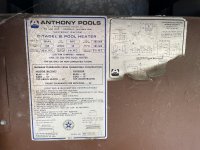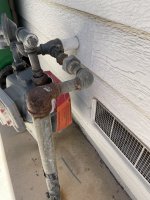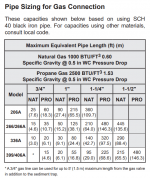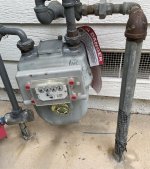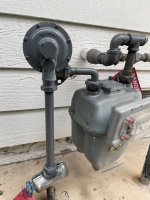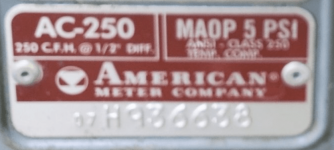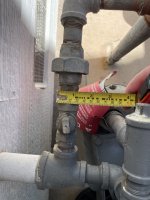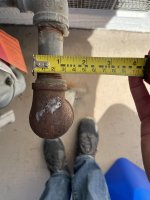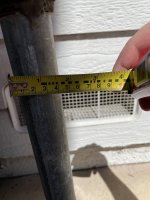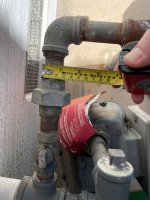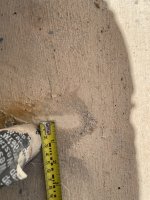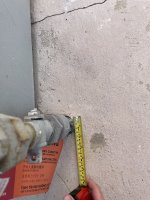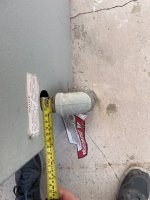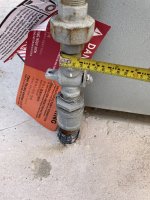I have a mystery hopefully someone can help with.
I recently purchased a home with a Citadel III pool heater (branded Anthony Pools), which is located about 17 feet from the gas main. Photo attached; built in 1985.
This pool heater is about the same age as the home, so likely was part of the initial build.
The heater worked fine during the home inspection, but has since developed a gas leak. The gas company red tagged it and said the control bypass was malfunctioning.
The home warranty sent a technician out who said this would not be covered because the heater had a 3/4 inch gas pipe running to it from the main, and that this was insufficient for this size heater. He is saying a 1’-1/2” pipe is required. As such, he said, lack of proper gas damaged the unit.
I find this hard to believe, because Anthony Pools installed this as part of the home build, so they wouldn’t run the wrong size pipe for their own equipment. Also, the local building inspector would have had to review the plans and the final before signing off, and they would have called that out. I also find it hard to believe that this size gas line damaged the unit, as it was able to last 35 years.
The challenge is I can’t locate the manual for this pool heater that would show its requirements, and I also can’t find any building code documentation from 1985 to show that 3/4 inch pipe was fine back then for that long of a run.
Does anyone have any data points or ideas?
I recently purchased a home with a Citadel III pool heater (branded Anthony Pools), which is located about 17 feet from the gas main. Photo attached; built in 1985.
This pool heater is about the same age as the home, so likely was part of the initial build.
The heater worked fine during the home inspection, but has since developed a gas leak. The gas company red tagged it and said the control bypass was malfunctioning.
The home warranty sent a technician out who said this would not be covered because the heater had a 3/4 inch gas pipe running to it from the main, and that this was insufficient for this size heater. He is saying a 1’-1/2” pipe is required. As such, he said, lack of proper gas damaged the unit.
I find this hard to believe, because Anthony Pools installed this as part of the home build, so they wouldn’t run the wrong size pipe for their own equipment. Also, the local building inspector would have had to review the plans and the final before signing off, and they would have called that out. I also find it hard to believe that this size gas line damaged the unit, as it was able to last 35 years.
The challenge is I can’t locate the manual for this pool heater that would show its requirements, and I also can’t find any building code documentation from 1985 to show that 3/4 inch pipe was fine back then for that long of a run.
Does anyone have any data points or ideas?


